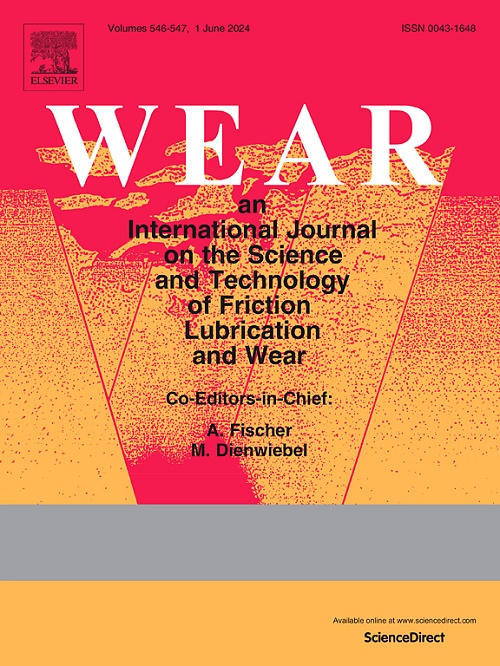scCO2冷却和MQL条件对钛合金铣削可加工性影响的研究
IF 5.3
1区 工程技术
Q1 ENGINEERING, MECHANICAL
引用次数: 0
摘要
钛合金由于其优异的机械性能,在航空航天和其他工业中得到了广泛的应用。然而,钛合金的铣削经常遇到严重的刀具磨损和不理想的表面完整性等工程挑战。本研究旨在通过优化的超临界CO2 (scCO2)冷却和最少量润滑(MQL)条件,提高钛合金的铣削可加工性。建立了铣削钛合金在不同冷却/润滑条件下的有限元计算模型。对辅助介质的瞬时流动特性和换热特性进行了严格的分析。在钛合金铣削实验的基础上,系统研究了工艺参数、表面完整性和刀具磨损对加工参数、表面完整性和刀具磨损的影响。提出了一种将能量场参数与铣削参数相匹配以实现钛合金低损伤切削的连贯方案。结果表明,基于MQL的scCO2-油对水基(scCO2- oowmql)的实施可以有效地解决单独使用MQL或scCO2冷却所观察到的油膜破裂和磨损减少不足的问题。此外,这种复合技术显著提高了钛合金的表面完整性,并确保了尖端状态的良好保存。平均切削合力(Fr)和最高切削温度(Tmax)随切削速度(vc)、每齿进给量(ft)和径向切削深度(ae)而增加,而表面粗糙度(Sa)随vc而减小。在实验参数范围内,优选的加工参数组合为vc = 60 m/min, ft = 0.09 mm/z, ae = 0.3 mm, ap = 3 mm。当scCO2-OoWMQL与这种组合结合使用时,与干切削相比,Sa显著降低了21.65%。本文章由计算机程序翻译,如有差异,请以英文原文为准。
Study on the effects of scCO2 cooling and MQL conditions on the milling machinability of titanium alloys
Titanium alloys are widely utilized in aerospace and other industries due to their exceptional mechanical properties. However, the milling of titanium alloys often encounters engineering challenges such as severe tool wear and suboptimal surface integrity. This study aims to enhance the milling machinability of titanium alloys though the application of optimized supercritical CO2 (scCO2) cooling and minimum quantity lubrication (MQL) conditions. A finite element calculation model for milling titanium alloy under various cooling/lubrication conditions (CLCs) was developed. The instantaneous flow behaviors and heat transfer characteristics of the auxiliary medium were rigorously analyzed. Based on the milling experiments of titanium alloy, the effects of operating parameters and CLCs on the process parameters, surface integrity, and tool wear were systematically investigated. A coherent scheme for matching the energy field parameters with milling parameters to achieve the low-damage cutting of titanium alloys was developed. The results indicate that the implementation of scCO2-oil on water based on MQL (scCO2-OoWMQL) can productively address the issue of oil film rupture and insufficient wear reduction observed with the sole use of MQL or scCO2 cooling. Additionally, this composite technique significantly improved surface integrity of titanium alloy and ensures excellent preservation of the cutting-edge condition. The average resultant cutting force (Fr) and maximum cutting temperature (Tmax) increase with cutting speed (vc), feed per tooth (ft), and radial depth of cut (ae), whereas surface roughness (Sa) decreases with vc. Within the range of experimental parameters, the optimal combination of machining parameter was found to be vc = 60 m/min, ft = 0.09 mm/z, ae = 0.3 mm, and ap = 3 mm. When scCO2-OoWMQL is applied in conjunction with this combination, a significant reduction of 21.65 % in Sa is achieved compared to dry cutting.
求助全文
通过发布文献求助,成功后即可免费获取论文全文。
去求助
来源期刊

Wear
工程技术-材料科学:综合
CiteScore
8.80
自引率
8.00%
发文量
280
审稿时长
47 days
期刊介绍:
Wear journal is dedicated to the advancement of basic and applied knowledge concerning the nature of wear of materials. Broadly, topics of interest range from development of fundamental understanding of the mechanisms of wear to innovative solutions to practical engineering problems. Authors of experimental studies are expected to comment on the repeatability of the data, and whenever possible, conduct multiple measurements under similar testing conditions. Further, Wear embraces the highest standards of professional ethics, and the detection of matching content, either in written or graphical form, from other publications by the current authors or by others, may result in rejection.
 求助内容:
求助内容: 应助结果提醒方式:
应助结果提醒方式:


